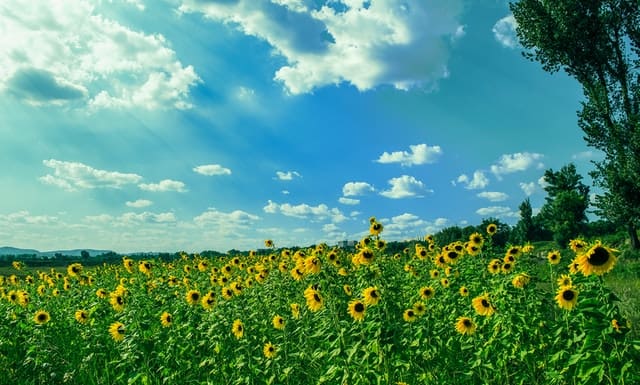more writerly thoughts on the seasons
You know the drill. I’m going to maunder about the qualities that define the season, in hopes something I mention might be useful to my fellow writers. Writing tips for writing the seasons, in other words. A quirk you forget when you aren’t experiencing it. A nuance you didn’t know about how life is in a region that behaves differently than where you live.
Sooner or later, every writer finds themself in a situation where they’re stuck describing a heatwave in a blizzard. If you’re looking for inspiration, read on.
boom cycle
Anywhere summer is a reality, not just an event on a calendar, everything outdoors is cramming a years’ worth of living into a season. In other words, summer is BUSY.
Leaves on the deciduous trees have finished budding; if they fruit, the fruit are swelling and dropping onto hapless pedestrians. There are flowers always blooming. Bees buzz, birds won’t shut up, and there are three times as many people out of doors as there were a month ago. People seem to go out more and stay out later, and because everyone’s windows are open, the line between in and out is blurred. As you walk the streets, your hear other people’s music and conversations.

It’s a season typified by intensity. Bright colors. Noise. Smells, both pleasant and repellant. Cut grass and sweat. Flowers and hot asphalt. The choking, malty stink of hot garbage, along with other modern staples like bug spray, sunscreen, and chlorine.
If yours is a low-tech fantasy universe, it will smell different but will certainly still smell. Summer is warm and heat intensifies odors; humidity makes it worse.
Butterflies have emerged from their cocoons. Fireflies are winking. Everyone’s looking to mate, so noisy insects will be sawing, frogs chirping, some of them loud enough to drown out the people partying. It won’t last, so everyone makes the most of it.
storm on the horizon
This is far from a universal truth, but in a lot of places, summer is a season of storms. All that sunshine baking off rock and soil turns the sky into a maelstrom, and spectacular thunderstorms ensue. I LOVE storms, and they can have such an impact on a scene, it almost feels like cheating!
One observation I’ve made living in different regions is that these events often follow a reliable pattern. In Denver, I got accustomed to intense, short-lived cloud bursts in the early afternoon. In Chicago, spectacular thunderstorms more often tear the sky apart in the wee hours of the morning, leaving behind a gentler rain that might not peter off until noon.
Some places just don’t get much violent weather. But if you’ve located your story somewhere action-packed and volatile, summer is the season for nature’s fireworks.
hot time
With all that sun, of course there must be heat. Don’t forget that the hottest segment of the day isn’t noon; temperatures don’t stop rising until hours later, in the late afternoon. 4 o’clock is the usual peak where I live.
Depending on your setting, heat will behave differently. Rural locations shed heat much more readily, so that the setting sun brings relief. In an urban environment, all that brick and stone has been soaking in the sun all day; it may be hours after midnight before temperatures finally begin to drop, because the buildings and pavement are still doing the sun’s job.

The further north you go, the longer the days are. Even when the sun goes down, it may take hours for darkness to fall.
Whether in a bustling urban landscape or an isolated mountainside, summer is warm, bright, and all the more vivacious because its time is limited.
To find the other posts in this series, look here:

Comments are closed